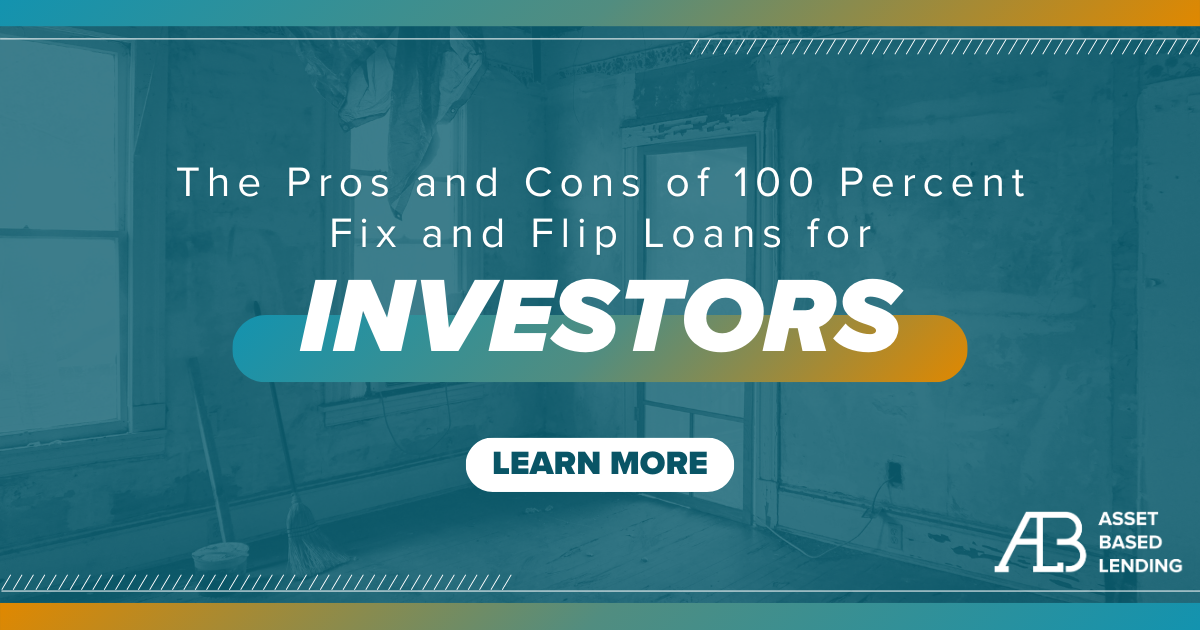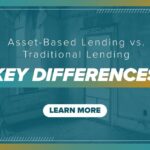There are many ways to fund a rehab project, including 100 percent fix and flip loans. This is an attractive option because it doesn’t require a down payment. Instead, the lender finances the full cost of the property purchase and renovation, so you can focus solely on executing the flip.
However, 100 percent fix and flip loans are hard to come by, not least because they shift all the investment risk onto the lender. As a result, borrowers seeking 100% fix and flip loans often face stricter lending criteria and loan terms. Read on to learn more about 100% fix and flip loans, their pros and cons, and alternatives to consider.
What are 100 Percent Fix and Flip Loans?
A 100 percent fix and flip loan is a short-term bridge loan (typically 12-18 months) for purchasing and renovating a property you intend to resell for a profit. The “100%” refers to the loan-to-value (LTV) requirement: up to 100% of the project can be financed, i.e. you as the borrower aren’t required to put any money down.
Though using other people’s money (OPM) is common in real estate investing, a 100% LTV is rare since it relies completely on OPM without requiring you to have any skin in the game.
100 Percent Fix and Flip Loan Terms and Requirements
To compensate for the outsized risk to the lender, 100% fix and flip loans often have stricter loan terms and requirements:
After-Repair Value (ARV)
While a lender may finance 100% of the project cost, they will likely limit loans to a maximum percentage of the property’s after-repair value (ARV). For example, ABL will finance up to 70% of a fix and flip’s ARV.
Steep Interest Rate and Fees
Interest rates on 100% fix and flip loans vary, but they are generally higher than standard fix and flip loan rates, let alone homeowner mortgage rates. Additionally, expect to pay a higher loan origination fee (2-5% of the total loan amount).
High Credit Score
When financing 100% of the project cost, lenders may require you to have a higher credit score than they would otherwise (usually 620-680).
Flipping Experience
Lenders want to see that you have a long track record of successful flips. This helps reassure them that the project will be a success.
Solid Investment Plan
Be prepared to hand over a detailed plan for the project’s purchase, rehab, and eventual exit. This helps reassure the lender of the project’s overall viability.
Benefits of 100 Percent Fix and Flip Loans
As an investor, 100% fix and flip loans have many benefits:
Minimal Upfront Cost
With 100% of the loan funded, you don’t need to use your own capital for the property purchase or renovation costs, lowering the barrier to start.
Scalability
Without the need to save for a down payment, you can take on more projects at a time, helping you scale your flipping business faster.
Less Risk of Capital Loss
100% fix and flip loans mean you’re risking little capital. If the deal goes sideways, you may not be out much money (though your reputation and credit will suffer).
Risks and Drawbacks of 100 Percent Fix and Flip Loans
100 percent fix and flip loans can come with significant risks and drawbacks:
Higher Loan Costs
Between higher interest rates and fees, your monthly loan payments will be high, which may strain your cash flow during the project.
Risk of Default
If you’re not careful, you can become overleveraged with too much debt and end up defaulting on the loan, which could be detrimental to the project and your future ability to borrow.
Poor Project Estimates
100% fix and flip loans leave little room for error. If you underestimate the project budget, timeline, or ARV, you can quickly end up owing more than the project is worth.
Why 100 Percent Fix and Flip Loans Are Hard to Find
Most private money lenders don’t offer 100% fix and flip loans due to the following:
Lack of Borrower Commitment
Without the need for a down payment, borrowers have little skin in the game. This makes them more likely to abandon a project if it goes south.
Underwriting Challenges
When underwriting 100% fix and flip loans, lenders balance the risk with the expected return. If the project doesn’t show promise, it’s unlikely to get approved.
Strict Regulations
Some markets have strict lending requirements (to protect borrowers) that may prevent lenders from offering 100% fix and flip loans.
Alternatives to 100% Fix and Flip Loans
If you’re not sure you want a 100% fix and flip loan but still don’t have enough for a traditional down payment, consider these alternatives:
Home Equity Loan
A home equity loan lets you borrow against the equity in your house—typically your primary residence but sometimes another investment property. Either way, you are “cross-collateralizing,” i.e. using one property’s equity to invest in another.
Partnerships
Another option is to partner with a friend or family member to cover the loan’s down payment cost. In return, they typically receive an ownership stake in the project. In formal contracts, the two parties are often referred to as general partner (GP) and limited partner (LP).
Crowdfunding
Some online platforms let you list flipping projects to solicit funds from many investors at a time. This is called crowdfunding, and it’s becoming an increasingly popular way to raise capital for real estate projects.
The Bottom Line
Of course, you can always save for a down payment or start with a smaller project to get a fix and flip off the ground.
ABL has funded thousands of fix and flips over the years with a maximum LTV of 85%, as few as 0 points, and no prepayment penalty. Loan sizes can be anywhere from $75K to $3.5M (or more for blanket loans).
See if you pre-qualify today! All it takes is some basic information about you and your project—with no obligation or impact on your credit.







0 Comments